How To Choose The Best Duvet Cover: Ultimate Buying Guide
On a chilly night, nothing is more comfortable than lying under a warm duvet. This emotion is accompanied by the inconvenience of washing a duvet filled with down and down substitutes. You may avoid constantly washing your duvet by purchasing a duvet cover. Also, you may mix and match vibrant and fashionable covers to improve the look of your bedroom.
Understanding the many kinds of bedding is the first step in determining your own preferences and requirements, yet it may be difficult to tell one form of bedding from another. We're here to assist if you need clarification. You're not alone. Among the most popular bedding accessories, duvet coverings have many uses and may take many shapes.
Discover everything you need to understand about the beautiful duvet cover with the help of this detailed guide.
Exploring Different Types Of Duvet Covers
Plain Duvet Covers
Plain duvet covers are simple and come in a single colour or a few solid shades. They offer a clean and minimalist look, allowing you to create a sleek and understated aesthetic in your bedroom.
Patterned Duvet Covers
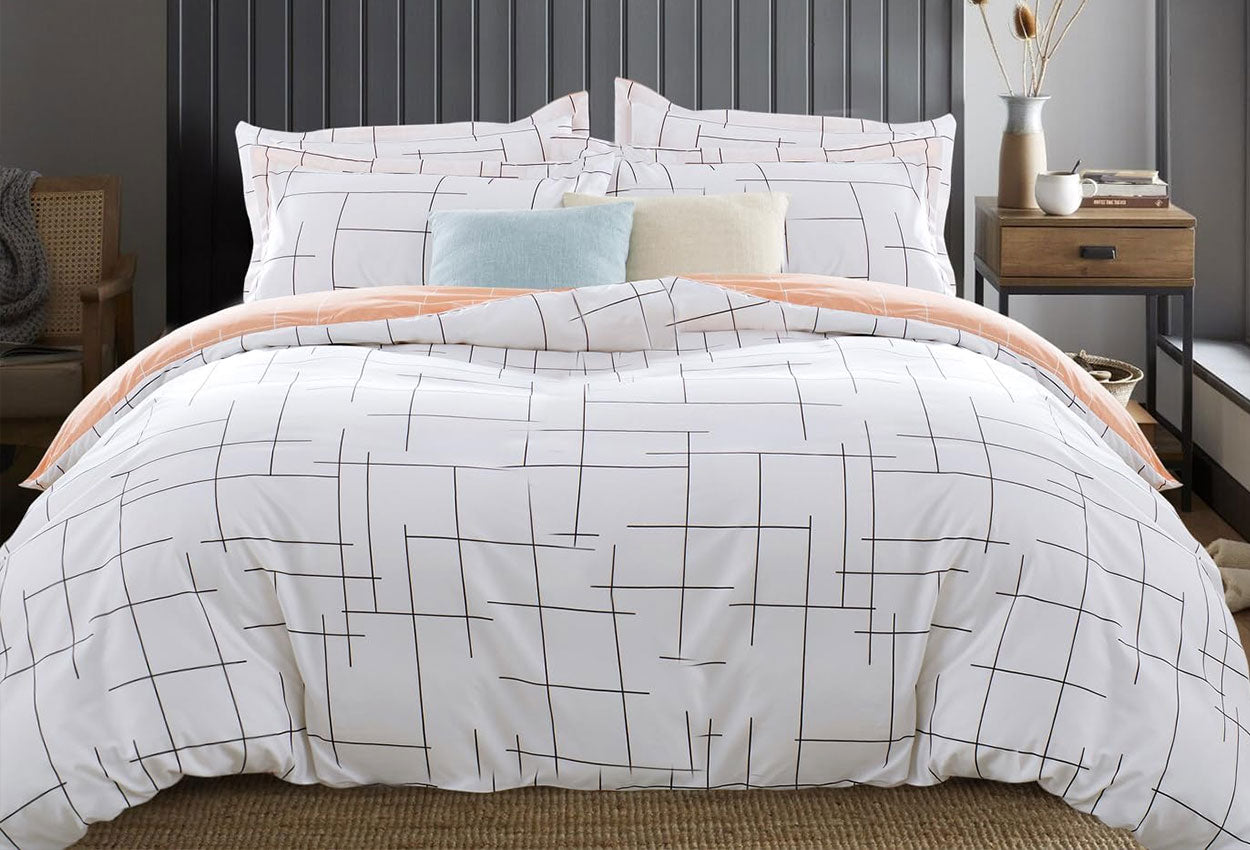
Patterned duvet covers feature various designs, such as stripes, floral prints, geometric patterns, or abstract motifs. They add visual interest and can complement or enhance the overall theme of your bedroom decor.
Printed Duvet Covers
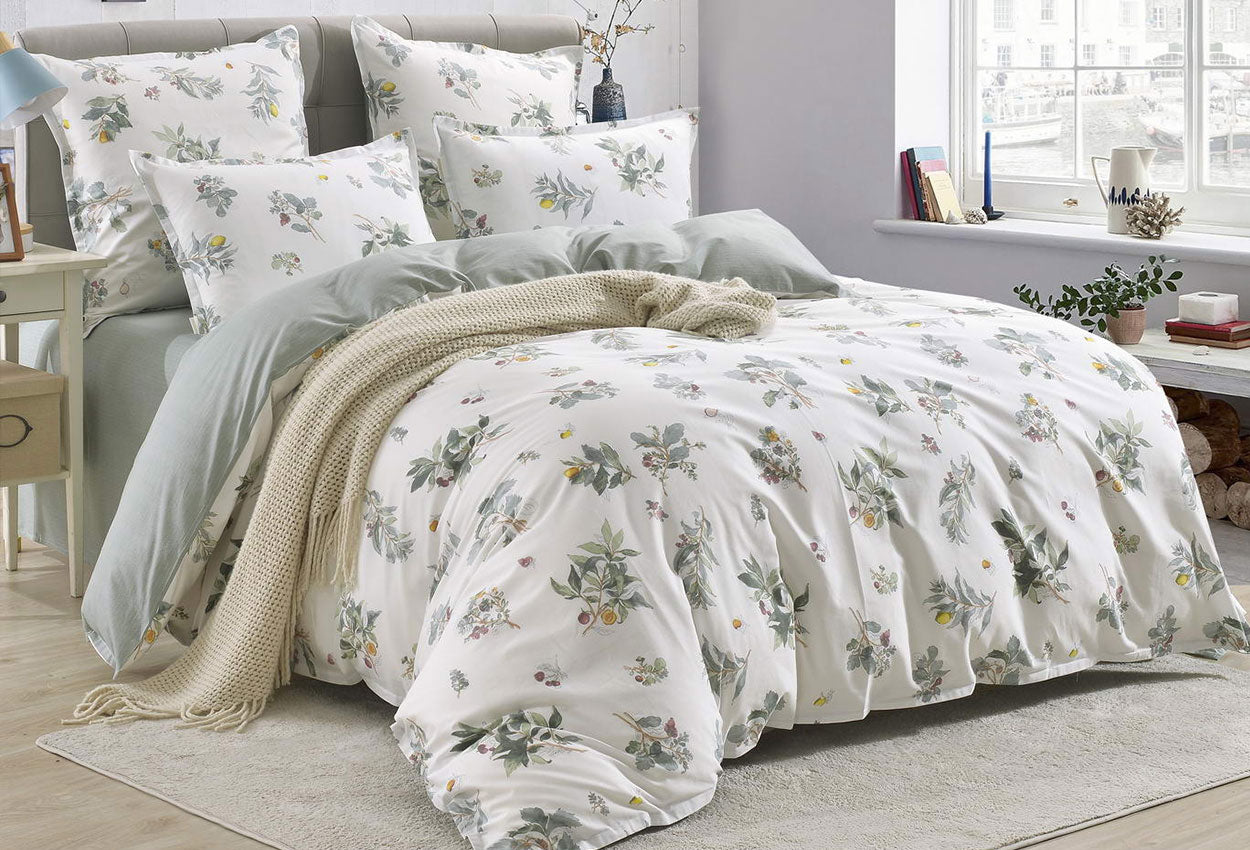
Printed duvet covers showcase intricate or artistic designs directly printed onto the fabric. These covers often feature detailed images, landscapes, or abstract artwork, creating a bold and eye-catching focal point in your bedroom.
Embroidered Duvet Covers
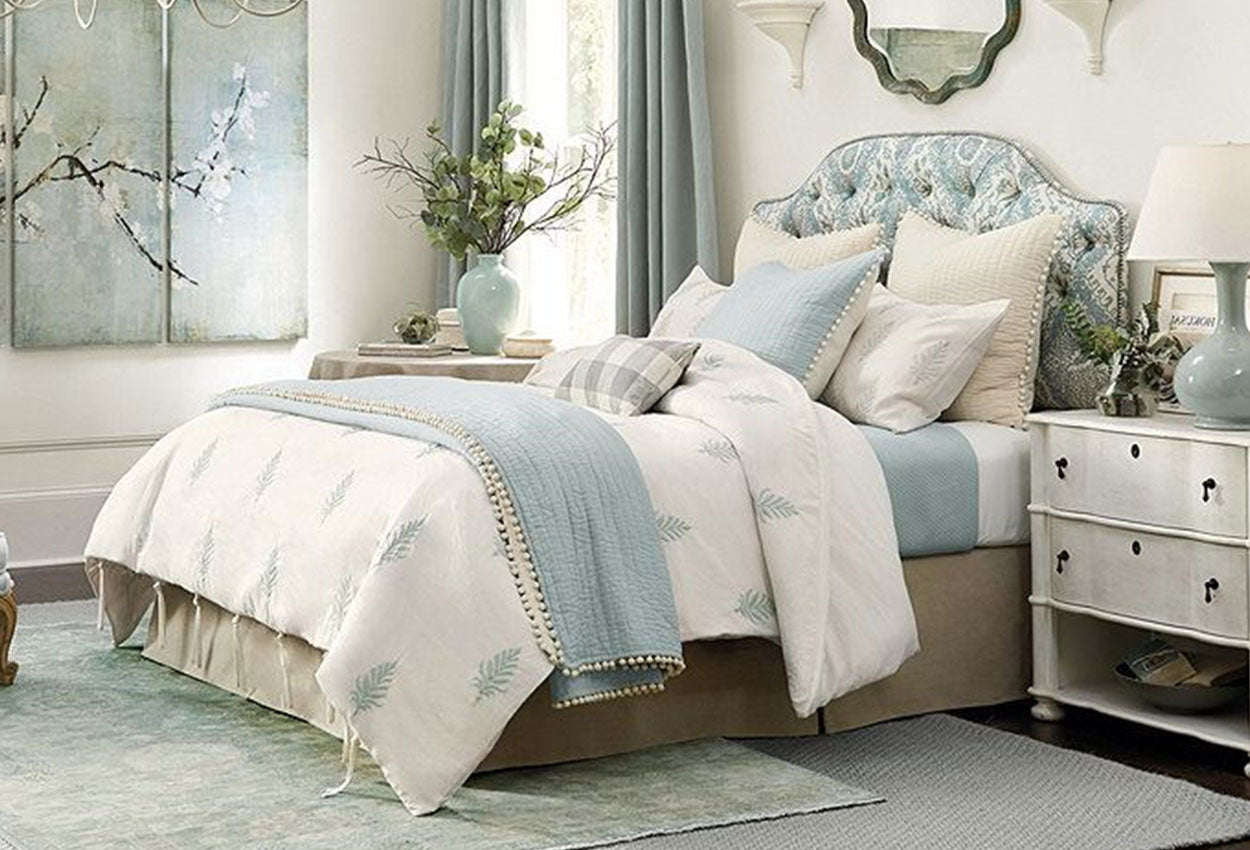
Embroidered duvet covers are embellished with decorative stitching, creating textured patterns or motifs on the fabric. These covers add a touch of elegance and sophistication to your bedding ensemble.
Quilted Duvet Covers
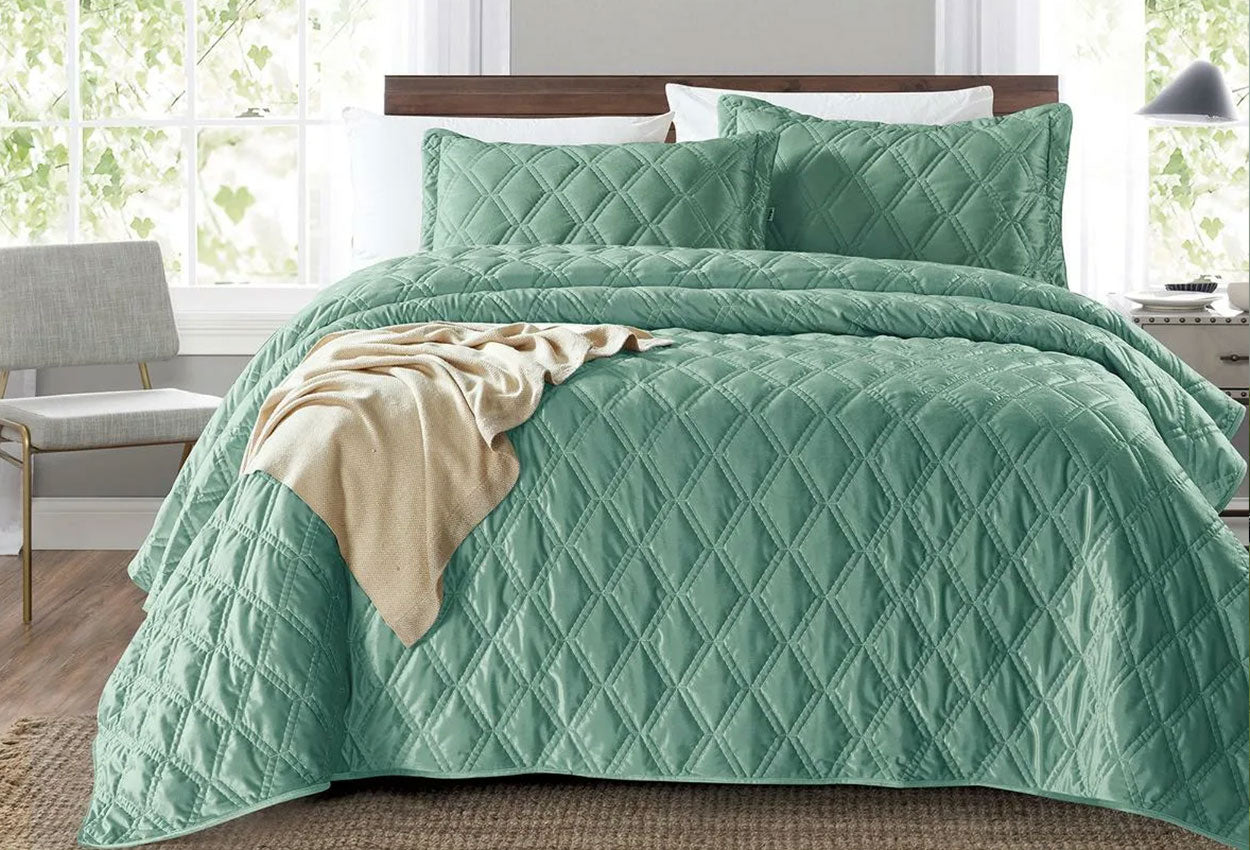
Quilted duvet covers have a layered construction with a top fabric layer stitched onto a padding or filling layer. This stitching creates a quilted or padded effect, providing extra warmth and a cosy look to your bed.
Reversible Duvet Covers
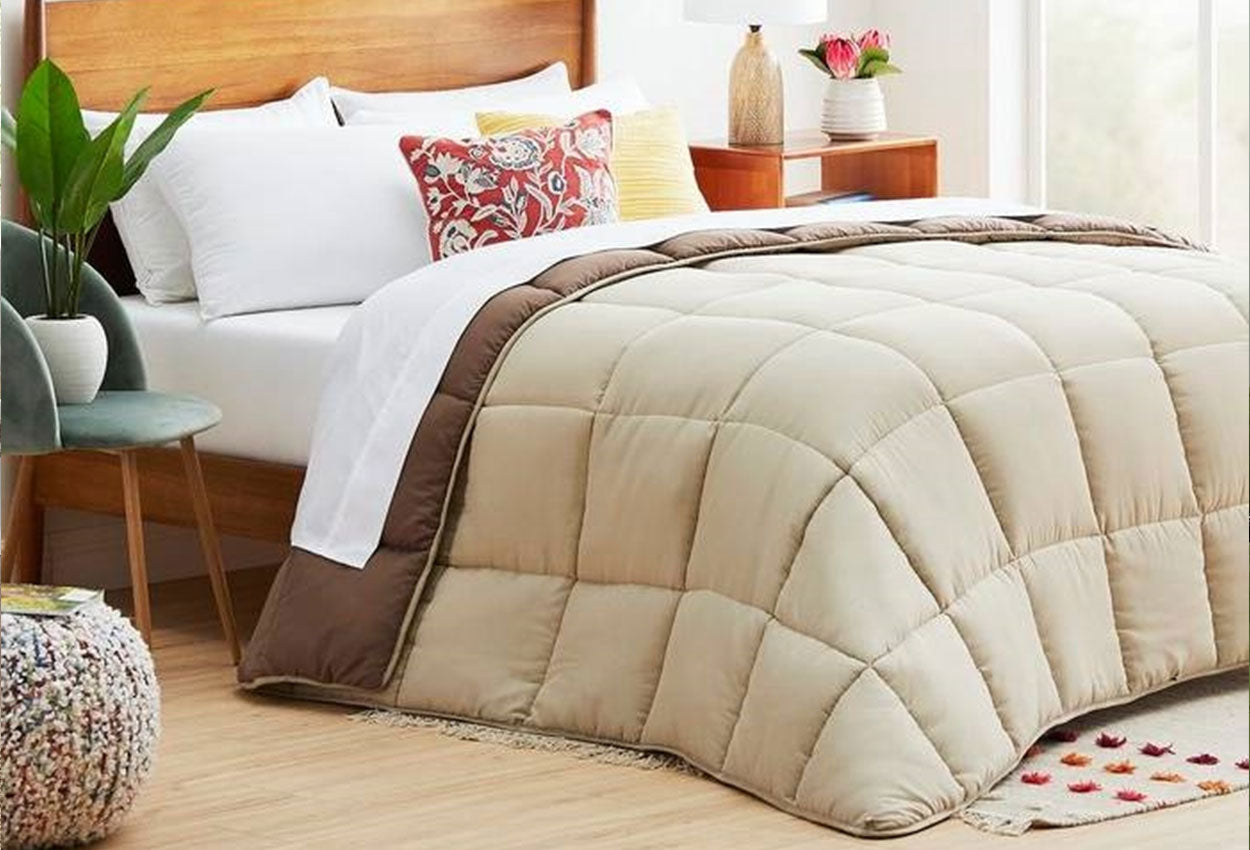
Reversible duvet covers have different designs or colours on each side, allowing you to change the look of your bed by simply flipping the cover. This versatility provides flexibility in matching your bedding with different room decor styles.
Different Types Of Duvet Covers Material
The top layer of your bedding, the duvet cover, enhances the overall visual appeal of the bedroom. All the usual bedding materials are available for duvet coverings as well. Picking the right duvet cover might help you have an excellent restful rest.
Silk Duvet Cover
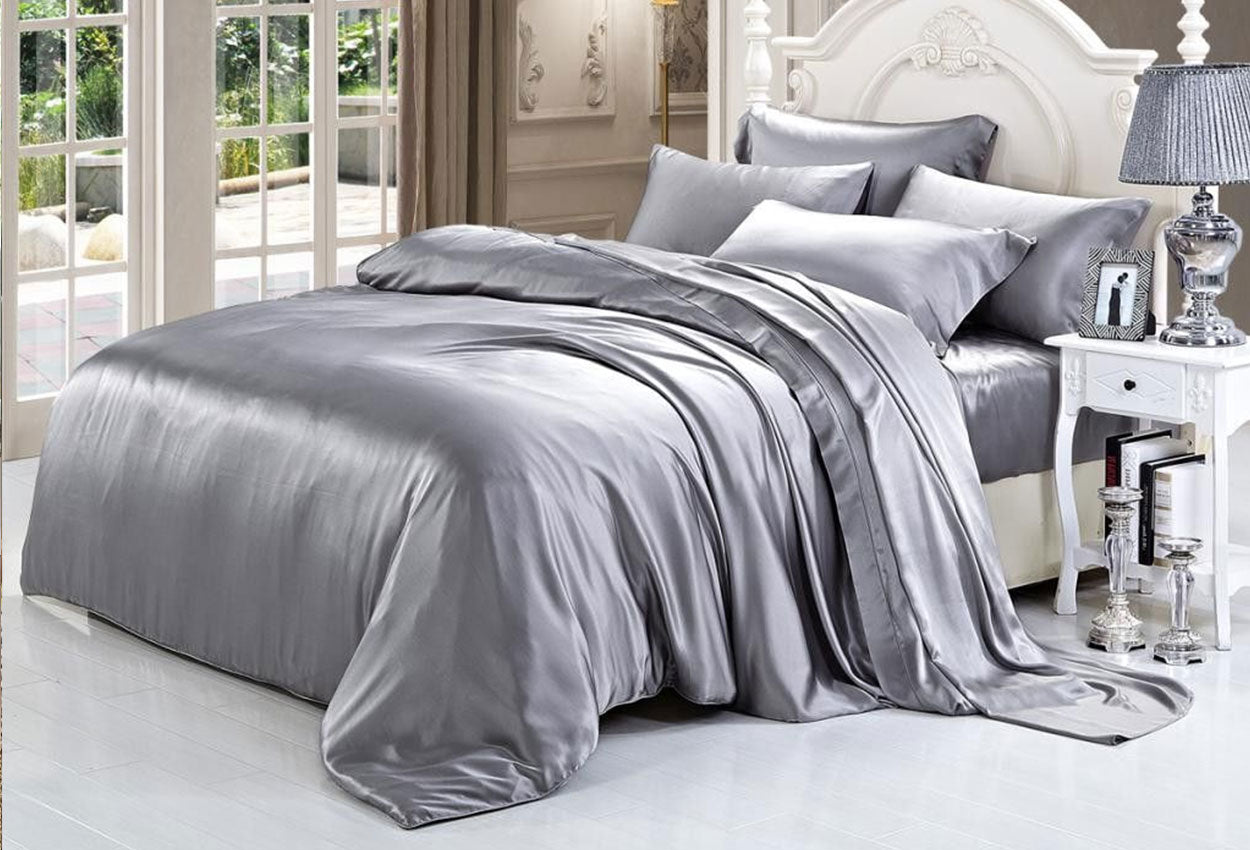
In the textile business, silk is the most costly fabric. Silk duvet covers are ideal for keeping warm at night since they trap heat. Due to the delicate nature of silk bedding, you must exercise caution while washing it.
Tencel Duvet Cover
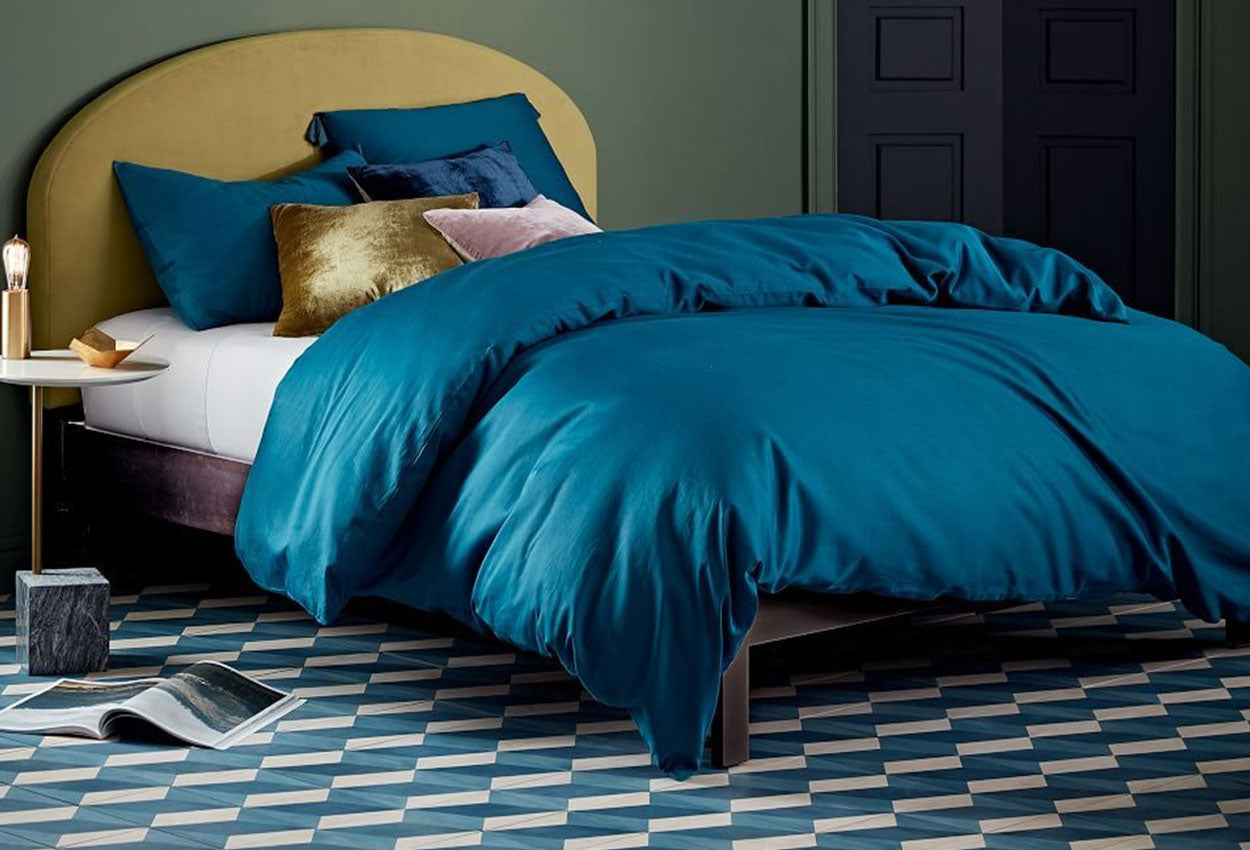
Tencel fabric is commonly blended with other fibres, making it even more plush and comfortable. It has solid anti-microbial qualities for hygiene and dust mite defence.
Linen Duvet Cover

Given the strength and durability of linen, you would anticipate that the duvet covers would endure for many years. The material is breathable and effectively absorbs moisture.
Bamboo Duvet Cover
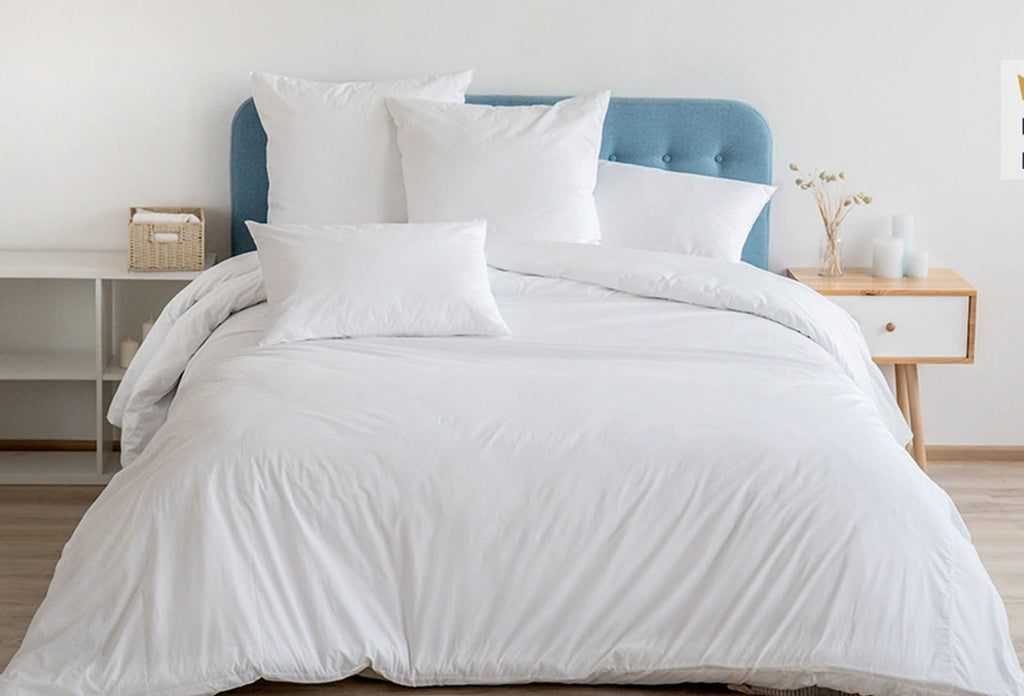
While bamboo duvet covers are sometimes used instead of cotton ones, they are neither eco-friendly nor skin-friendly. You'll experience a comparable level of softness and breathability as cotton.
Wool Duvet Cover
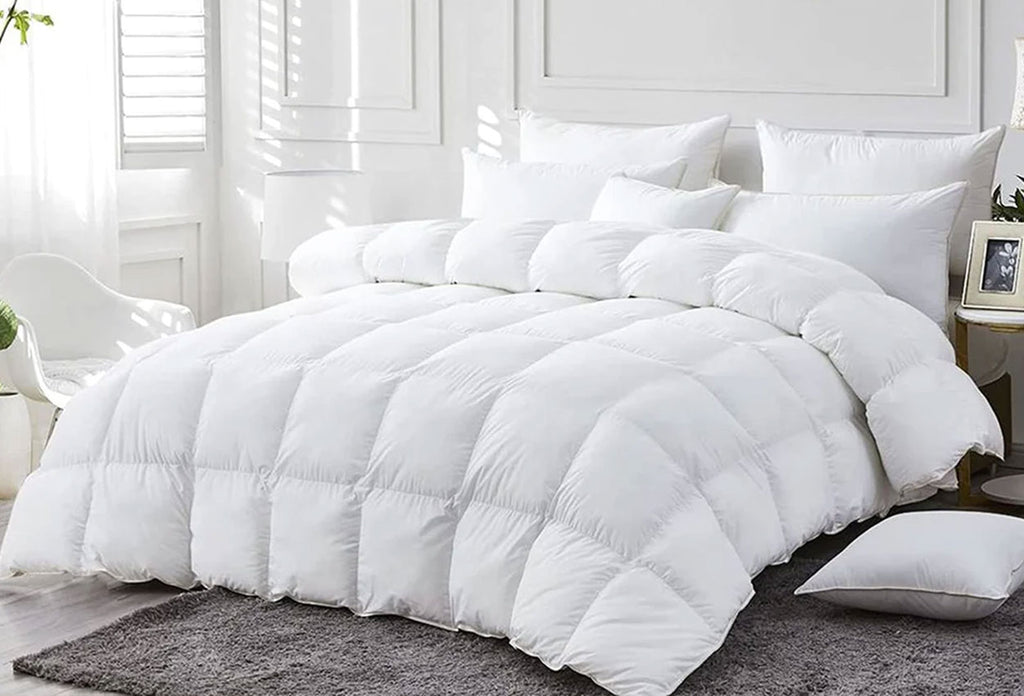
Wool has a built-in inclination to keep you warm, so folks who live in cold climates will appreciate how cosy woollen duvet covers are. Wool is less soft than other textiles and rough on the skin. You will wake up drenched in sweat during the summer.
Polyester Duvet Cover
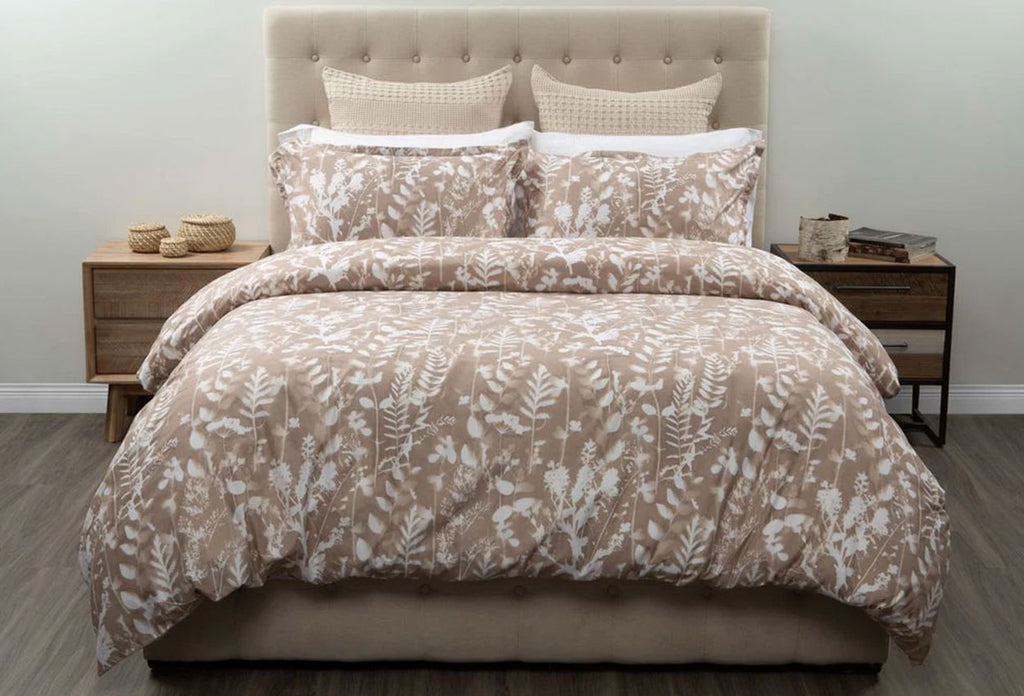
Polyester, an artificial fabric, is often mixed with cotton to decrease prices. The fabric will be breathable, light, and simple to maintain. Typically, it is simple to wash and dry and wrinkle-resistant.
Cotton Duvet Cover
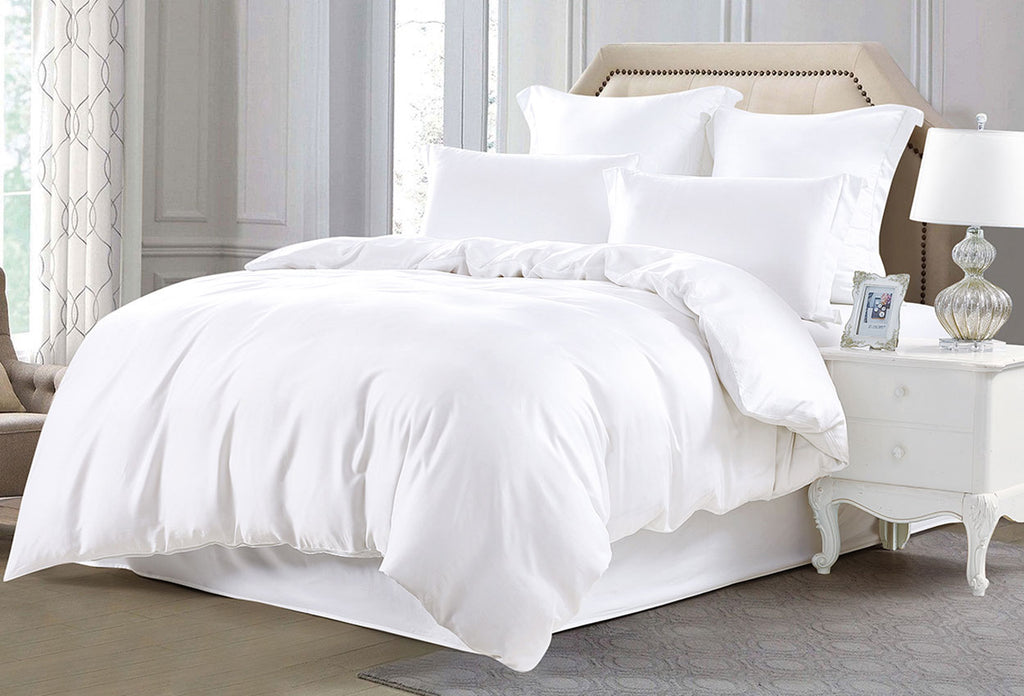
The most popular fabric in the textile business is cotton, and duvet covers made of it are supple, strong, light, and breathable. They are skin-friendly and ideal for practically all weather situations.
Percale Duvet Cover

With a high thread count and a finely woven plain weave, percale is a branded fabric that produces a superior material that is very tough and long-lasting.
Finding The Perfect Duvet Cover For Different UK Bed Sizes
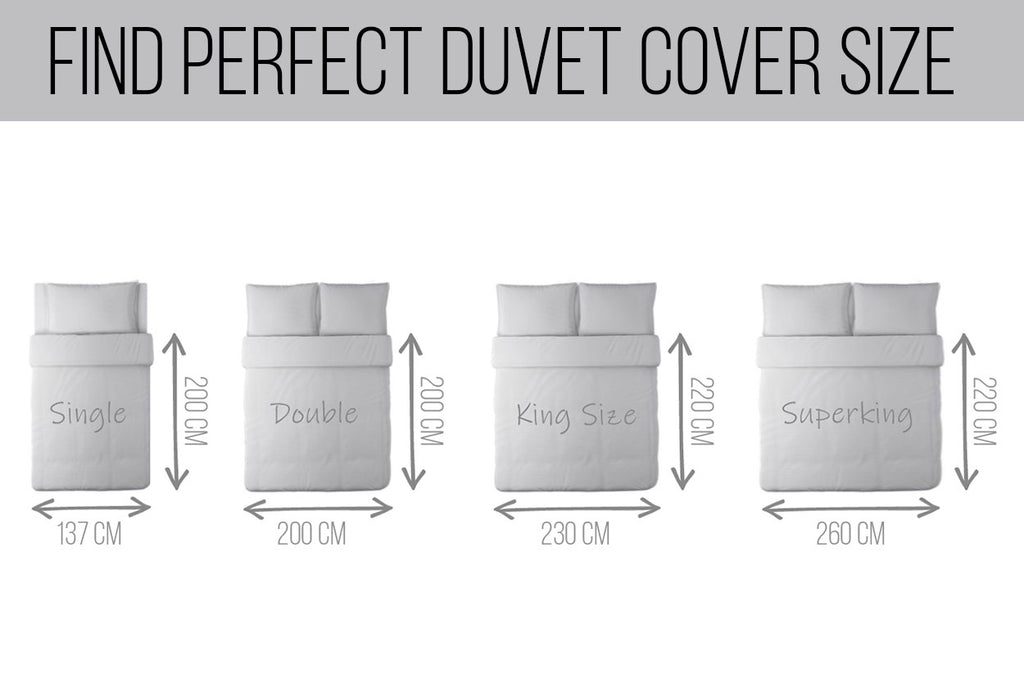
Single/Twin Size Duvet Covers
Single or twin duvet covers typically measure around 135 cm x 200 cm (53 in x 78 in). Look for duvet covers designed for single beds to ensure a proper fit.
Double/Full-Size Duvet Covers
Double or full duvet covers are suitable for beds that measure approximately 200 cm x 200 cm (78 in x 78 in). Choose duvet covers labelled as double or full size to ensure they fit your bed correctly.
King Size Duvet Covers
King-size duvet covers are designed for larger beds and usually measure around 230 cm x 220 cm (90 in x 86 in). Look for duvet covers labelled as king-size to ensure they fit your bed correctly.
Super King Size Duvet Covers
Super king-size duvet covers are designed for extra-large beds and generally measure around 260 cm x 220 cm (102 in x 86 in). Look for duvet covers labelled as super king size to ensure they fit your bed appropriately.
How Do You Choose The Right Duvet Cover?
Material
When choosing a cover, comfort should be the first factor to consider. By selecting the suitable material for your duvet cover, you may avoid sleeping in extreme heat or cold and improve the appearance and feel of your bed. Choose a warm material if you become cold at night.
- Wool is famous in the winter because it is soft and keeps the body warm.
- Sateen is a year-round choice for those with an excellent disposition. It has a robust feel and a delicate buttery texture.
- Instead, use a breathable fabric if you tend to become overheated while you're sleeping.
- A lightweight material with a variable appearance, linen may be ironed for glossy or left rumpled for a more worn-in appearance.
- Another standard option for warm sleepers is percale. On the skin, its highly breathable fabric feels cool and crisp.
Having trouble choosing a suitable fabric? While choosing your bedding, keep your favourite fabric in mind. You'll feel comfortable in a duvet cover made of linen or cotton if you like the way these materials feel on your skin while you're wearing them.
Thread Count
Like other bedding, duvet covers have a thread count measurement. A duvet cover's thread count, which ranges from 100 to 1,000, counts the threads per square inch of cloth. While it ultimately relies on the fabrication, a greater thread count often indicates a softer fabric. A premium duvet cover has a thread count of 300 or above.
Designs And Fashion
Make sure it's a material you like wearing, then pick a design that complements your tastes and lifestyle.
- Choose bedding that is all white for a classic hotel design. It gives the space a bright, airy sensation and an opulent appearance.
- Do you like a homely look? Instead, go for a dark duvet cover. Rich textures in shades of deep blue, green, or plum will make the bed seem like a peaceful refuge and give another level of visual appeal to the room's decor.
- Go for a patterned duvet cover if you're worried youngsters or pets could make messes in the bedroom. A print may not only hide stains and fur but also improve the space's interior design.
In the same way, look for a cover with a smooth surface to reduce the chance of claws catching embroidered patterns.
Kind Of Closure
Regarding closures for a duvet cover, you can consider options such as buttons, zippers, or ties. These closure mechanisms help secure the duvet inside the cover, preventing it from slipping out.
- Buttons can be sewn onto the opening of the cover, allowing you to fasten and unfasten it easily.
- Zippers provide a more convenient and efficient closure, as you can simply zip up the cover to enclose the duvet.
- Alternatively, ties can be used, where fabric ties are attached to the cover, allowing you to tie them together to close the duvet cover securely.
Fit And Size
Duvet quilts and covers come in various sizes, from child's cot to king size. Most manufacturers follow a standard size, which is approximated on the box.
Before purchasing, check the package size to avoid an expensive error and ensure the duvet cover fits perfectly. Measure the duvet cover beforehand to avoid slipping or becoming rumpled.
How To Choose The Right Size For Your Duvet By Measuring It?
Follow these steps to determine the appropriate size for your duvet:
The Size Of Your BedYou must first determine the size of your bed before measuring your duvet since there are four standard bed sizes in the UK: Single, Double, King, and Super King.
Mattress DimensionsCalculating the correct size duvet requires measuring your mattress's length and width. Depending on the depth of your mattress, you may need to adjust the drop of your duvet.
Determine Your Size CarefullyAfter determining the size of your mattress, you may choose a duvet that will fit it well. For example, a double bed requires a double-sized duvet, whereas a king bed requires a king-sized duvet. You can select a larger or smaller duvet if that is what you need.
Analyse The FillThe warmth and weight of a duvet vary depending on how much down, feathers, or synthetic material is used as fill. Choose a duvet with a greater fill weight if you want a heavier or warmer one. Choose a duvet with a lesser fill weight if you like something lighter.
Ensure The DimensionsCheck the measurements of a duvet before buying one to be sure it will fit your bed correctly. Although having somewhat varying measurements from expected standards, certain duvets may be branded as fitting a specific size. After ordering, measure your duvet carefully to ensure the correct size.
These instructions will help you measure your duvet and choose the ideal size for a pleasant and comfortable night's sleep.
Benefits Of Investing In A High-Quality Duvet Cover
A duvet cover is a visible protective element in bedding, similar to pillowcases. Despite widespread acceptance, duvet covers require careful consideration. They are easy to change, machine washable, affordable, and cosy.
Although they may seem unnecessary, they serve multiple purposes and are often used with down comforters or duvets.
First, The inside duvet should be kept clean, dust-free, and in excellent condition by the duvet cover. This is crucial for down-filled duvets since they are more costly and of better quality.
Although the inside duvet should be cleaned infrequently, the cover is machine washable and straightforward. The duvet cover's outer layer, which can be replaced, prolongs the life of your inner duvet.
The duvet cover adds a touch of flair to space by acting as the centrepiece for the rest of your decor. A duvet cover is a great way to personalise a room or serve as a blank slate for a more distinctive style.
Having numerous covers also lets you choose various fabrics to offer your blanket various degrees of warmth. You may use a flannel cover in the winter and something lighter in the summer, or you can go for a premium material like silk.
Tips For Draping And Styling Your Duvet Cover And Coordinating Your Bedding
The remainder of your bedding should be used to complete the appearance after you've chosen your preferred duvet cover.
- Fold the duvet down about a third of the way from the top of the bed to break it up.
- After that, cover it with a blanket.
- Lastly, add a throw or a light comforter at the foot of the bed to provide contrast.
- Use a second duvet for a more abundant appearance. This adds to the comfort of the bed.
- For a contemporary, monochromatic design, use bedding in similar tones, or choose a few contrasting hues for visual intrigue.
- Pillows may be used to decorate the remainder of the bed once your sheets, blankets, and duvet have been piled.
- Place bed pillows in shams and covers that coordinate with the fitted sheet and duvet cover for a classic appearance.
- Place a few ornamental pillows in front of the bed pillows correctly.
- Mix up the pillows for a more varied look. Try experimenting with various colours, textures, and sizes rather than a unified appearance.
When your room needs a makeover, switch up your design with duvet covers since they are so simple to replace.
Tips For Maintaining & Cleaning Duvet Covers
Washing Instructions
Follow the manufacturer's washing instructions on the duvet cover's care label. Most duvet covers can be machine washed using a gentle or delicate cycle. Use a mild detergent, and avoid using bleach or harsh chemicals.
Stain Removal Techniques
Treat stains on the duvet cover promptly. Use gentle stain removals methods such as spot cleaning with a mild detergent or specialised stain removers. Always test any cleaning product on a small, inconspicuous area first to avoid damaging the fabric.
Drying and Ironing Guidelines
After washing, tumble dry the duvet cover on low heat or air-dry it if recommended by the manufacturer. Avoid over-drying to prevent excessive wrinkling. If necessary, iron the duvet cover on a low heat setting, following any specific ironing instructions provided.
Conclusion
Your own preferences should guide the duvet cover's dimensions and materials. The size is simple, but you must also pick the appropriate fabric for your climate, comfort level, and price range. When purchasing a duvet cover, remember to check for corner ties to prevent the duvet from bunching up within the cover.
Remember that the duvet cover keeps your duvet from becoming dirty, saving you the hassle of cleaning and laundry. Since the duvet cover has two matching pillowcases, you may experiment with other colours for your bedroom.
Frequently Asked Questions
What is the difference between a comforter and a duvet?
A cover and an insert are the two parts of a duvet. One particular quilted item of bedding is a comforter. A duvet makes your bed seem fluffy and tidy and is simple to care for. Nevertheless, the insert must be assembled to fit within the cover properly. A quilt or comforter instantly adds layers to your bed and is ready to use. A quilt, however, can become hotter at night and be more challenging to maintain.
What is the difference between a duvet and a duvet cover?
A duvet is a soft, quilted bedding insert filled with down, feathers, or synthetic materials. On the other hand, a duvet cover is a removable fabric cover that encases the duvet. It protects the duvet, allows you to change your bedding style, and is easier to clean than the duvet.
Is your duvet cover the same size as your duvet?
Duvet inserts are often made to be longer than the duvet cover by a few inches. After the duvet is stuffed within the cover, this helps give it a fluffier appearance. Therefore, you should constantly double-check the sizes of both. Choose a duvet cover that is two inches shorter or the same size as the insert.
How often should I wash my duvet cover?
If necessary, wash your duvet cover every one to two weeks. Frequent cleaning may maintain it clean and odour-free by preventing the accumulation of sweat, oils, and grime.
Can I cover a super king-size duvet with a king-size duvet cover?
Using a king-size duvet cover with a super king-size duvet is not advised since the duvet may move and become uneven within the cover. The best duvet cover to choose is one that fits your duvet well.
How often should I change the duvet cover?
A duvet cover's lifetime might change based on the fabric's quality and how often it is used. With adequate maintenance, a well-made duvet cover may endure for many years. But, it could be necessary to replace it if you see wear and tear indicators like fading, pilling, or holes.
Can I use a duvet cover without an insert?
Yes, you can use a duvet cover without an insert. Duvet covers can be lightweight bedspreads or covers for your existing blankets or quilts. They provide a decorative layer and are easily removable for washing.
Are duvet covers suitable for all seasons?
Duvet covers do not provide insulation, so their suitability for different seasons depends on the insert or filling used inside. Choose an appropriate duvet insert with the right thickness and warmth rating for each season, and pair it with a duvet cover that suits your desired style.
Can I customise or personalise my duvet cover?
Yes, there are options available to customise or personalise duvet covers. Some retailers or online services can print custom designs, photos, or text onto duvet covers. This allows you to create a unique and personalised bedding item.




